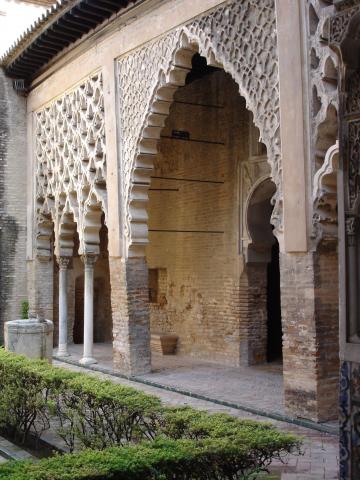
Ibn ʿArabi lived at a time of remarkable cultural and spiritual flowering in the West and East of the Islamic world as well as in the Christian and Jewish worlds.
Al-Andalus, described in its time as 'the ornament of the world', had been under Islamic rule since the 2nd/8th century. It had become a highly cosmopolitan and diverse culture renowned for its artistic achievements. Its famous writers included the famous commentator on Aristotle, Ibn Rushd (d. 1198), known in the Latin West as Averroes, whom Ibn ʿArabī met in Cordoba; Ibn Bajja (d. 1138), known as Avempace; and Moses Maimonides (d. 1204), the great scholar of the Torah. Key spiritual figures included Abu Madyan (d. 1198) and Ibn Sab'in (d. 1270).
In the Christian world the newly discovered classical literature of Greece and Rome was having an impact on medieval society, leading to the emergence of a scholarly or scholastic culture and the establishment of monastic orders based on the teachings of figures such as St Dominic (d. 1221) and St Francis of Assisi (d. 1226). The 12th and 13th centuries also saw the ongoing struggle between Christians and Muslims for control of Jerusalem and the Holy Land, as the Crusades continued.
The Islamic East saw a period of stability in most areas that Ibn 'Arabi travelled in. Baghdad was the effective cultural capital, seat of the Abbasid caliphate. It enjoyed a brief period of restored glory under the caliph al-Nasir li-Din Allah (r. 1180–1225), who headed the futuwwa organisation that Ibn 'Arabi came into contact with. Key spiritual masters in Baghdad included al-Suhrawardi (d. 1234) and al-Jilani (d. 1166). Following the capture of Jerusalem by Salah al-Din al-Ayyubi (known in the West as Saladin), the Syrian and Egyptian states were aligned under his children, known collectively as the Ayyubids. The new power of Anatolia was also emerging at this time, under the Seljuk sultan of Rum Kaykhusraw (r. 1192–1211), whose first minister was Majd al-Din Ishaq, Ibn ʿArabi's companion.
See Contemporaries